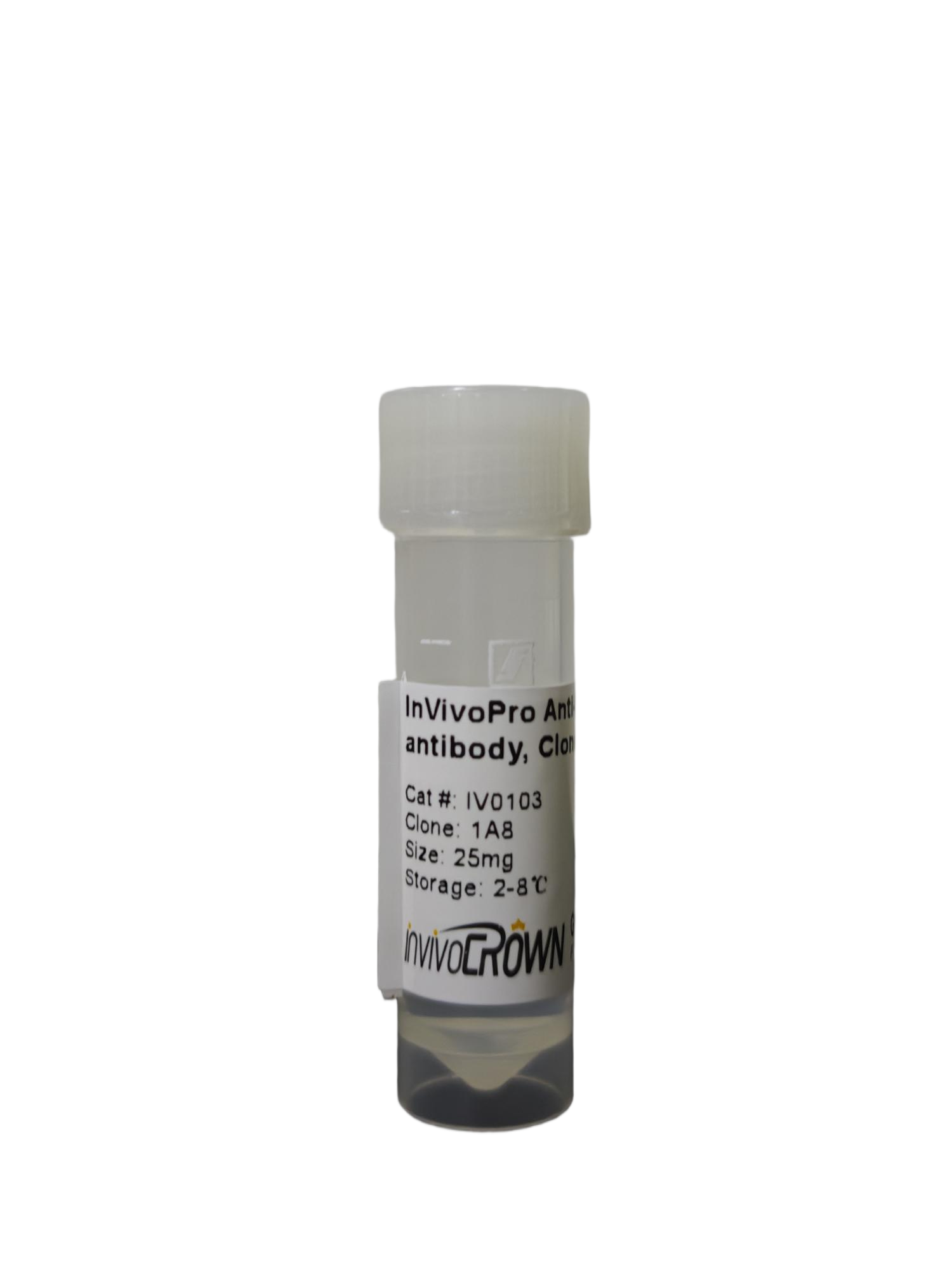| Catalog |
IV0112 |
| Product Name |
InVivoPro Anti-Mouse CTLA-4 (CD152) in vivo antibody, Clone 9H10 |
| Size |
1mg/5mg/25mg/50mg/100mg |
| Isotype |
Syrian hamster IgG |
| Clone |
9H10 |
| Target |
CTLA-4 |
| Other Names |
cytotoxic T-lymphocyte antigen 4, CTLA-4, CD152 |
| Isotype Control Catalog Code |
Syrian hamster lgG Isotype Control |
| Dilution Buffer |
PBS, pH 7.2, contains no stabilizers or preservatives |
| Reactivity |
Mouse |
| Host Species |
Syrian hamster |
| How much antibody to use in vivo |
200-300 μg per mouse; or 10-15 mg/kg. This range is based off the most recent publication data using the 9H10 clone in vivo. Each investigator should determine their own optimal working dilution for specific applications. |
| Background |
CTLA4 (Cytotoxic T-Lymphocyte Antigen 4) also known as CD152, is a protein which is expressed on the surface of Helper T cells and plays an important regulatory role in the immune system. CTLA4 is a member of the immunoglobulin superfamily, expressed on the surface of Helper T cells. CTLA4 transmits an inhibitory signal to T cells. CTLA4 is potentially therapeutic in auto-immune diseases4, such as rheumatoid arthritis, HIV, autoimmune thyroid disease, multiple sclerosis and may also be useful during organ transplantation and cancer treatment. Clone 9H10 antibody has been shown to promote T cell co-stimulation by blocking CTLA4 binding, allowing for CD28 binding. |
| Applications |
In vivo CTLA-4 neutralization |
| Purification |
protein A or G |
| Storage |
This antibody is stable for at least 2 months when stored at 2-8°C. For long term storage, aliquot in working volumes without diluting and store at -20°C or -80°C. Avoid repeated freeze thaw cycles. |
| Shipping |
2-8°C with blue ice |
| Concentration |
Lot specific, generally ≥ 5.0 mg/ml |
| Shelf Life |
12 months from the date of receipt if stored as recommended |
| Formulation |
PBS Buffer, PH 7.2, with no carrier protein, or preservatives. |
| Sterility |
0.2 μM filtered |
| Endotoxin |
≤ 1.0 EU/mg, by the LAL method |
| Purity |
99% |






